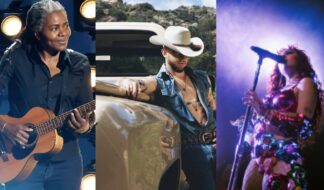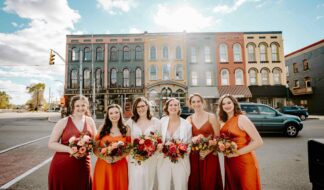The City Without Closets: How Ferndale Became So Queer
Inside the rich LGBTQ+ history of one of Michigan's queerest hubs
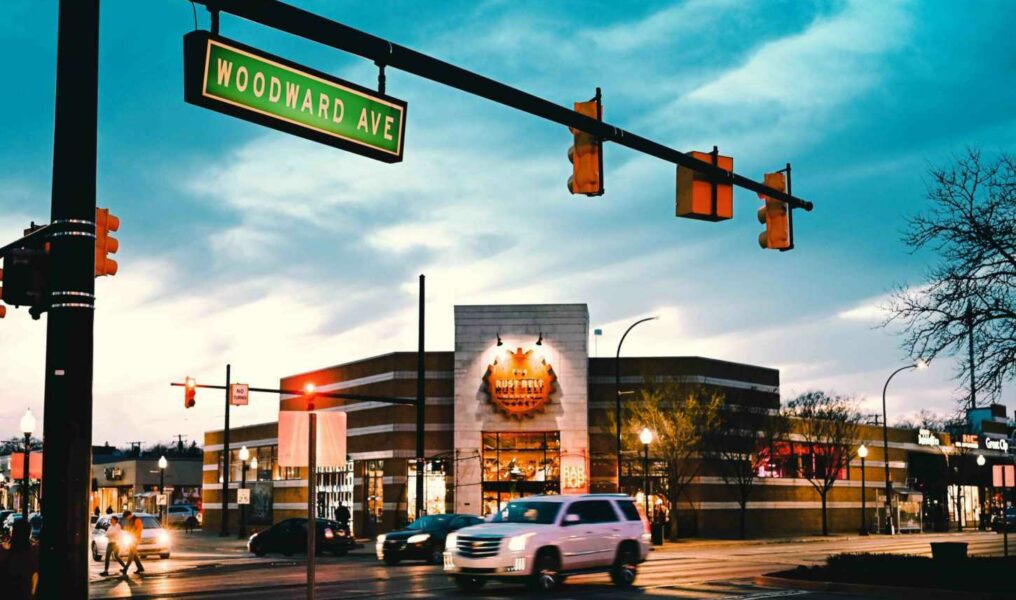
Ferndale has been known as one of Michigan’s biggest queer hubs for decades. With many of the hallmarks that distinguish a Greenwich Village, a Castro, an Andersonville — traits like a walkable downtown, a diverse array of restaurants, bars and cafes, and housing stock that’s long proven catnip to renovators — it fits the mold of many urban queer enclaves which preceded it or developed in parallel. But it differs in one important way from those other areas: it’s a suburb, located just past Eight Mile beyond the bounds of the City of Detroit — and so it lies outside the heart of the metro area its resources often serve.
For Emma Maniere, a Grosse Pointe native and an NYU doctoral student studying Ferndale’s queer development, this fact is more than incidental. Ferndale, she explains, is considered by historians to be an inner-ring suburb — something that’s played a key role in shaping its identity, including its queer one, as distinct from but tied to the City of Detroit’s.
“It’s right on the outskirts of Detroit, built in the early 20th century, [with] homes geared toward working-class families,” says Maniere, noting that much of Ferndale’s housing stock went up in the mid-20th century. “It was designed as kind of a factory town.”
According to Maniere, Ferndale’s identity as a blue-collar burg held through most of its 20th-century history, when the most visible commercial centers of the region’s queer community were quartered further south along Woodward — well into the heart of Detroit.
In fact, it held even into the 1980s, when Ferndale’s downtown was riddled with commercial vacancies and the area, in the absence of the industries that had once held it up, became economically depressed. By the late ’80s, when a significant number of queer people began to move into the area, this situation created an opportunity in the form of low-cost space. But it presented them with an unglamorous history to push back against as well.
“Looking in the archives from the ’80s, ’90s — when more of a queer community [was] developing — there is a lot of rhetoric about ‘hip new Ferndale.’ Like we have to prove that we’re not a backwards, blue-collar, racist town. There’s a pushing up against what Ferndale formerly was, and still was to some degree, [or] maybe never was,” says Maniere, gesturing at aspects of history that rarely get written down — and so become the hardest to tell. “They understood themselves to be replacing something else that was older, that was whiter, that was straighter,” she says of Ferndale’s queer community at that time.
Less tony than Royal Oak, less intellectual than Ann Arbor — and cheaper than them both — the Ferndale that queer people have made a home of since the 1980s became a kind of safe space from fears both real and imagined, building its identity – whether successfully or not – on notions of inclusion. At the same time, its story intersects with histories of white flight and segregation which affected and divided the queer community then — and in so many instances, still do. Even while studying Ferndale’s history, Maniere seems struck by it as one that’s somewhat singular, if marked by imperfect efforts: a case study with a lot to tell.
Taking flight
The largely white segment of the queer community that settled into Ferndale didn’t come from nowhere; for decades, Detroit was its primary home. And bars and clubs were — as has often been historically the case — its most visible, best-documented institutions, even during times when they had to operate quietly.
“The earliest bars were right downtown, near Cadillac Square. Downtown in the 1940s, there was a queer presence at Greenfield restaurants and bars like the Ten-Eleven and the Palais and La Rosa’s,” recalls Tim Retzloff, a Pride Source contributor and LGBTQ+ historian at MSU. “So then over time, starting in the ’50s, they started moving up the [Woodward] corridor.”
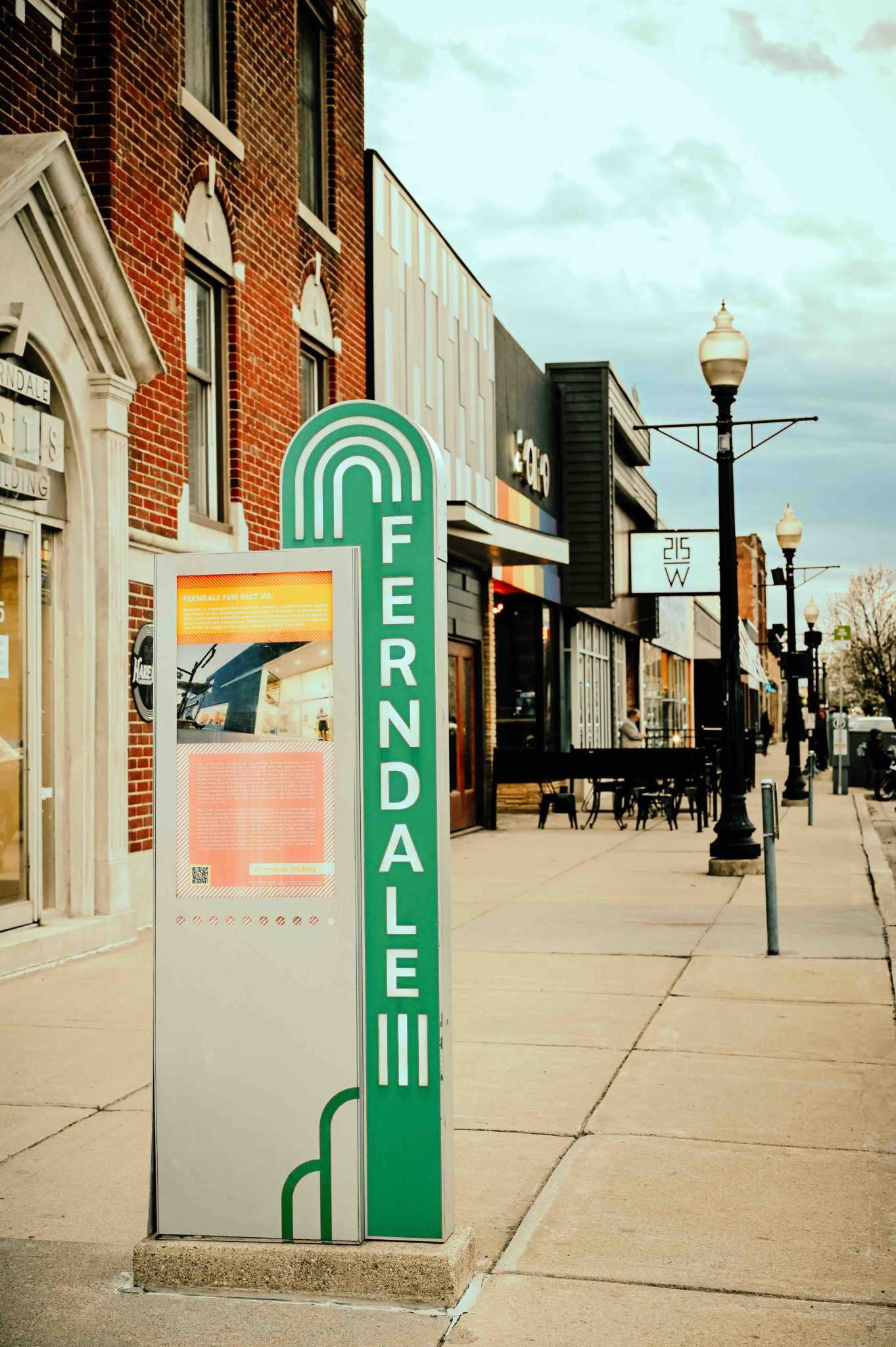
As queer Detroiters gradually migrated, with communities and businesses taking hold farther and farther up Woodward, the tenor of such spaces varied. There was the Palais, a lesbian bar which stayed open from 1949-1980, and Todd’s, a racially integrated bar on Seven Mile. Todd’s was co-owned by an interracial gay couple who Retzloff said “set the tone,” and its constituency bridged a “racial chasm” which has often divided queer people: a rare feat in queer commercial nightlife.
“Lots of people, depending on their economic class or their closetedness, didn’t partake in that. And then, of course, it’s largely white Detroiters,” notes Retzloff of Detroit’s queer bar scene. “So the kinds of experiences and spaces for African American Detroiters throughout this time were often different. There were overlaps, too — movie theaters and certain cruising places would have been places where people converged. There was a lot of racism in the bars themselves.”
For Maniere, these decades-spanning dual histories of segregation, and of movement from a downtown core, overlap with the racial dynamics of “white flight,” which saw rapid disinvestment from many American urban centers. For much of the past century, white people with the ability – and desire — to flee cities for less close-knit environments have done so, though urban queer people have not always followed suit. In the case of Detroit’s queer community, the movement outward proved a bit more gradual, with the Palmer Park neighborhood — close to the city’s border with Ferndale — becoming a major queer center through the 1980s, when a combination of forces began to pull the community there apart.
A queer 'magnet'
Alongside the dynamics propelling white flight from Detroit proper — with narratives around “crime” often standing in for less plain racial ones — Maniere points out that AIDS was a major contributing factor. In decimating queer communities, it also attacked queer spaces, hurting even the strongest among them. She specifically recalls an old letter to an editor by a Palmer Park resident grieving the community’s losses, a telling artifact of that time.
“I believe someone was mentioning: ‘I lived in this building — but everyone in the building either had AIDS or had died from AIDS, and I needed to move,’” she recalls. “So aside from racialized depopulation, there’s also reason and community and a fresh start — or maybe not an entirely fresh start. But I could understand why someone would want that if their community is being depleted around them.”
At the same time, she cautions against using words like “decimated” for the situation of Detroit’s queer community at this time and since, noting that plenty of queer institutions still held together as white residents left the city behind — and still do.
“There’s Black life in Detroit, [and] there’s Black gay community in Detroit throughout this period,” notes Maniere. “So I think it’s definitely important not to gloss over that.”
Retzloff, too, emphasizes the durability and adaptability of the city’s Black queer institutions – which played a major role in advocating for the passage of a Human Rights Ordinance in 1979.
“Certainly, politically, people [involved] in different organizing, wanting it to not be all white. But there’s also just people in the African American community who just — they’re going to forge their own way because they’re there. They were fed up with being excluded, feeling excluded, or feeling erased — or marginalized or unheard. Or tokenized. There’s multiple examples of spaces that opened up, both commercial and non-commercial.”
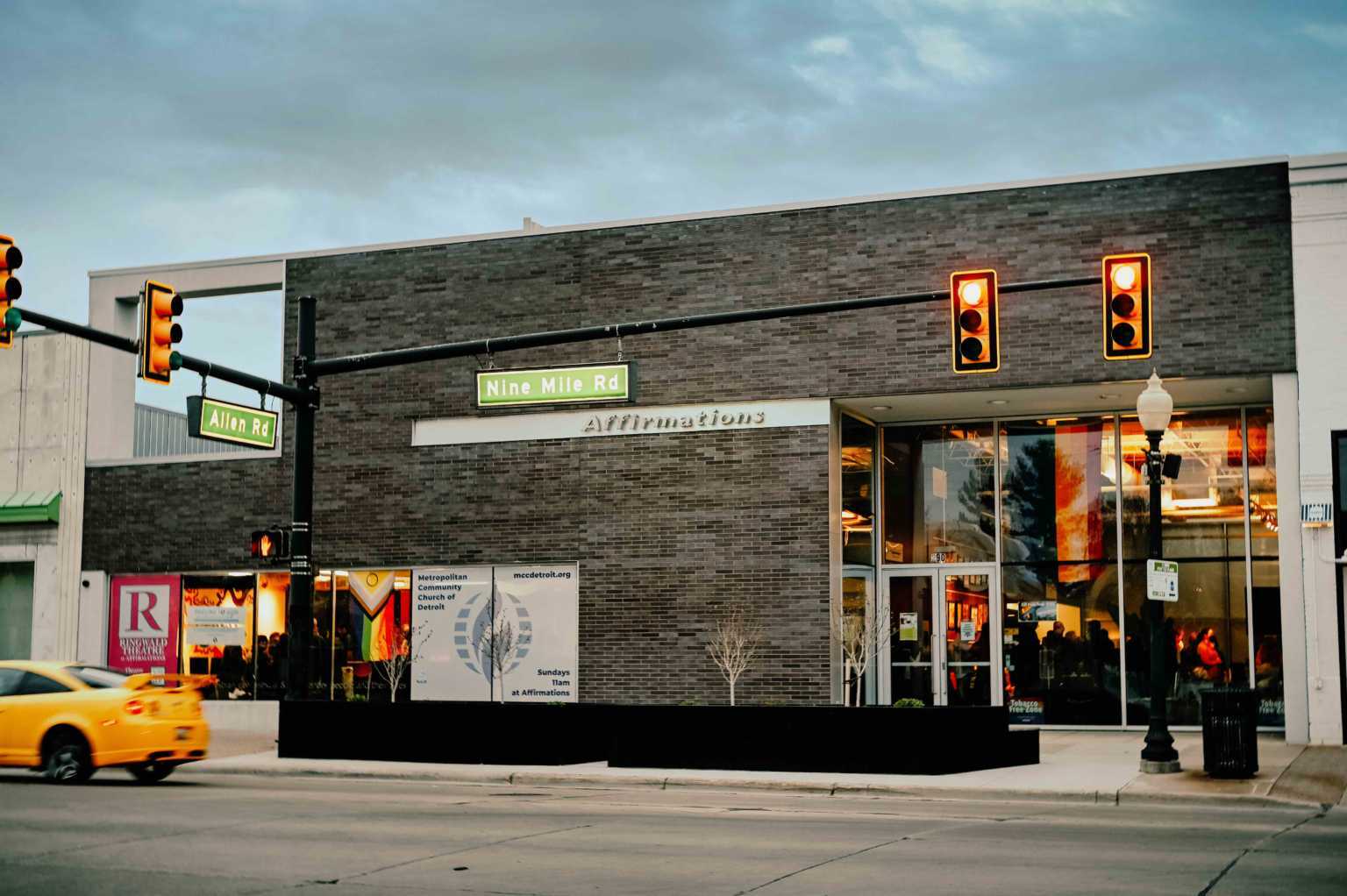
At the same time, Maniere adds, AIDS helped to make Ferndale “a magnet” for queer people. Thanks to the presence in the late ’80s of support groups and queer advocacy organizations like MAPP and Affirmations within the city, there were not only accessible resources, there were also signs that it might be a comfortable place to be.
Maniere notes that the state of Ferndale at that time — with its wealth of single-family housing, plentiful open commercial spaces and a desirable location near both Detroit and Royal Oak, as well as the less concentrated queer communities that existed in neighboring suburbs — gave it a specific appeal for many.
“Here’s a place in Ferndale where there’s opportunity, there’s ‘authenticity’ in these kinds of homes, there’s these beautiful tree-lined streets but not too ostentatious, there’s business opportunity, and there’s opportunities to refurbish homes and kind of create a community in our own image — whatever that means,” she says.
For many, a new vision of queer community meant building on its roots in activism — something Ferndale’s then-cheap real estate had become a modest hub for. With a number of leftist organizations already calling the city home since the late 1970s, Ferndale provided a springboard for expanding queer advocacy.
A space for advocacy, then for Pride
“At the beginning of 1988, we had an organization called MOHR [Michigan Organization for Human Rights] and they were basically a lobbying group and a sort of civil rights group,” recalls Gary Roberts, a longtime Oak Park resident who’s remained involved in Ferndale’s queer community since that time. “[They] ended up getting a block grant for 12 months to fund a local AIDS center because there was nothing here. Other than bars and clubs, there was no kind of ‘center’ here.”
Before long, MOHR held a kind of town hall where allies and community members could workshop a plan for a center. Roberts and several friends attended, drawing up a plan that prioritized community needs — not just for Ferndale itself but for the metro area as a whole.
“It was decided that the first thing they would do is create a hotline for people to call in and get information. Whether it was a parent because their children had come out to them, or someone who has come out and doesn’t know where to find the gay community or had any kind of questions,” Roberts remembers.
After spending a year taking calls, it became clear to Roberts and his peers that there was a tremendous need for the services they’d been providing, which included substance counseling and even suicide prevention. When grant funds ran dry, they resolved to keep going on their own.
After bouncing between whatever spaces they could find — for a time, space in Gigi’s, a still-operating gay bar on Warren, then a friend’s spare rental property in Detroit — they eventually found three rooms in a commercial building in downtown Ferndale. This would become the base of operations for their organization — which soon after was called Affirmations — for years.
“That was a debate: whether we should stay in Detroit or be in Ferndale. But in the ’80s, Detroit wasn’t as safe and friendly of a town as it is these days to go in. So there was that — people were kind of afraid to volunteer, especially at night, to come in and do the phone lines,” remembers Roberts.
In quartering itself in Ferndale, Affirmations may — in choosing a location more inviting to people based out in the suburbs — have actually broadened its reach. But it undoubtedly played a role in transforming Ferndale, helping to make it the last stop for the queer folk who’d been migrating up Woodward for decades, along with plenty of others.
“We [at Affirmations] really brought a lot of people into the city: into the used record store, into the downtown area, got [the city] more foot traffic because we were there,” says Roberts. “I think Affirmations really turned the tide, where people stop exiting downtown Ferndale for greener pastures of Royal Oak or Berkley or other cities that were doing better economically overall.”
Throughout the 1990s, as Affirmations’ constituency grew and its services evolved to meet new needs, so did Ferndale’s commercial footprint. Soon, restaurants, record stores and coffee shops sprang up in old commercial spaces, some relocating for various reasons from both Detroit and Royal Oak. With these, too, came a network of openly queer and inclusive businesses and arts festivals. Eventually, Pride came to Ferndale, too.
“We started saying the words gay and lesbian back then, when that was terrifying to a lot of people — but it’s a gay Pride event!” remarks Michael Lary, the former director of Pridefest, which eventually became Motor City Pride. (He serves as Ferndale’s Special Events Director today). “How [could] you call it Pridefest without also saying what it’s for? So that was very controversial back then. People in Ferndale and Metro Detroit were very closeted… I mean, our only social outlet was the bar.”
For Lary, taking over Pridefest — held through much of the ’90s in a parking structure in Royal Oak — meant employing a proactive approach, looking to other cities as examples of how to run, present and frame such events. In 2000, when he sought to move it into the streets, integrating the festival better with the fabric of the city, his request to do so was denied. And so he turned to Ferndale, where the event was held for the first time in 2003.
By that point, Ferndale was garnering a reputation as a queer-friendly environment on a number of fronts. In 1999, Ferndale elected its first gay city official in Craig Covey, who eventually became Ferndale’s mayor in 2008 — as well as Michigan’s first. MAPP and other queer advocacy organizations, too, continued their work at the same time and several bookstores centered on queer work blossomed around town. All of this made the festival a natural fit.
Like Ferndale’s queer community itself, the festival grew and became a fixture within the city,
drawing few protests and ample support as time went on. As it grew, Ferndale’s businesses came to depend on it — so much so that when the festival relocated to Detroit in 2012, it hit the whole community as a visceral sort of shock.
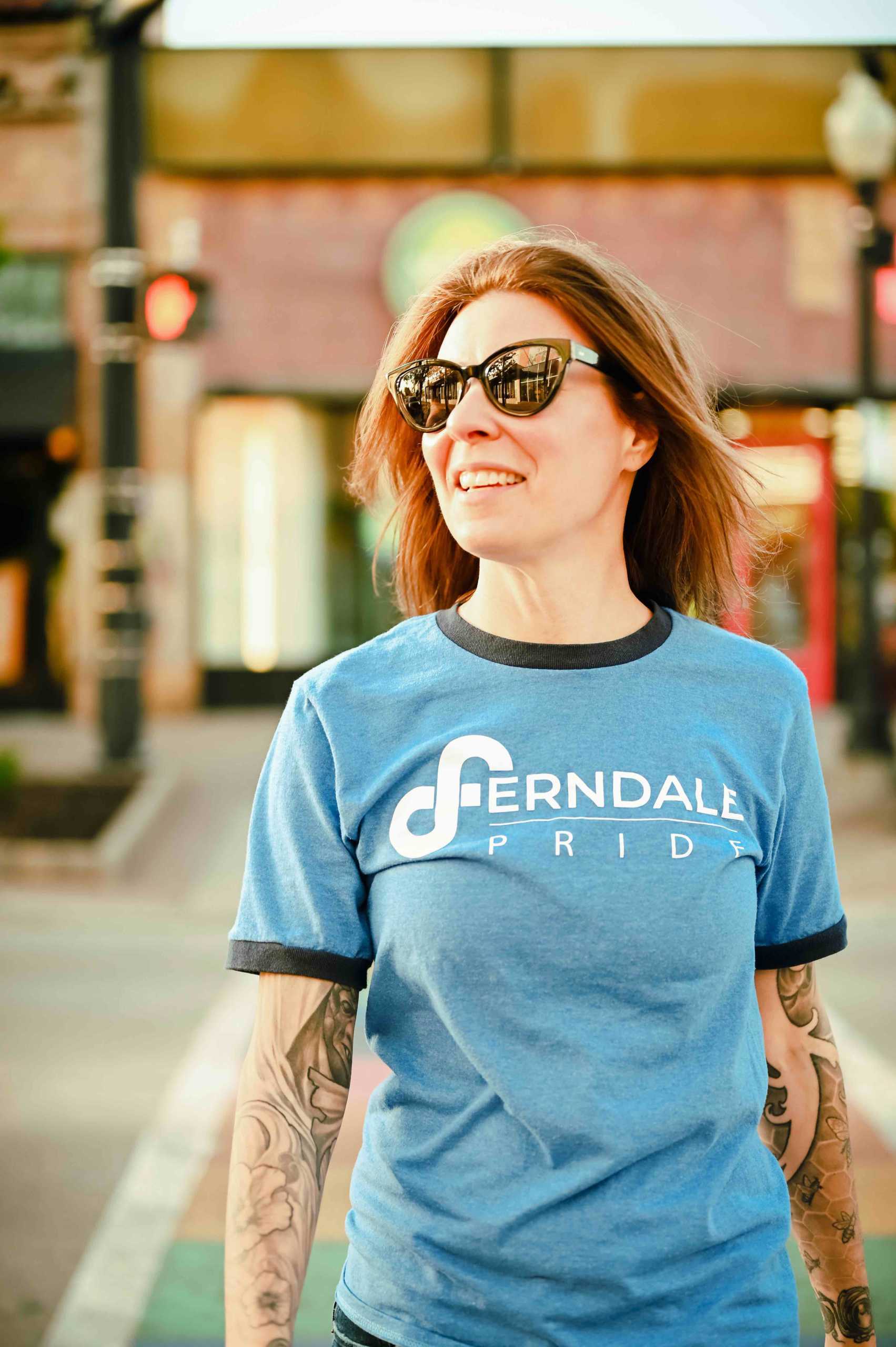
“We felt this tremendous loss in our community,” recalls Julia Music, who in the wake of Motor City Pride’s departure founded a new event, Ferndale Pride. “It was our bid for our businesses — for some of them, that’s Christmas; there’s no better business day for them. And those are businesses that give back to our community in huge ways.”
In developing Ferndale Pride, Music has collaborated with the city’s growing web of queer-run and -allied local businesses each year, ensuring they have support to get them through the rush of each year’s festival. This kind of reciprocal, harmonious approach, suggests Music, who found comfort and solidarity in visiting Ferndale as a teen, exemplifies the ties between the city and its queer community.
“We’re able to contribute back to the businesses; they’re able to give back to the charities, and it just becomes this kind of cyclical motion.“
But these relationships cut both ways. Businesses that refuse to evolve to address community needs, failing to become inclusive spaces which cultivate healthy relationships with the community, don’t often survive for long in Ferndale. Those that do, suggests Music, tend to enjoy widespread support from within and outside the queer community.
“The stores and institutions that have been able to keep up with the times have definitely stayed,” she notes, citing Soho, the Elks Lodge and J’s Penalty Box as examples. “Because they treated people the right way.”
Bridging old divides
As Music acknowledges, though, efforts at inclusion are always works in progress. And for all its efforts at creating a progressive environment, Ferndale’s population remains extremely white — 87.72% as of the 2020 Census.
According to Lilianna Reyes, who served as Affirmations’ Interim Director for most of 2018 and now works at Ruth Ellis Center in Highland Park, Ferndale’s nature as a largely white and increasingly gentrifying suburb makes it difficult for it to be racially inclusive, and for businesses and organizations there to be attentive to the needs of residents living south of Eight Mile.
“It’s really great to see LGBT businesses in Ferndale – my question is how many Black and brown people will go to support those places, because there’s also really great LGBT businesses in Detroit,” says Reyes, who notes that a good number are run by Black and brown proprietors.
“Even if they’re not Black and brown, they cater to more Black and brown culture.”
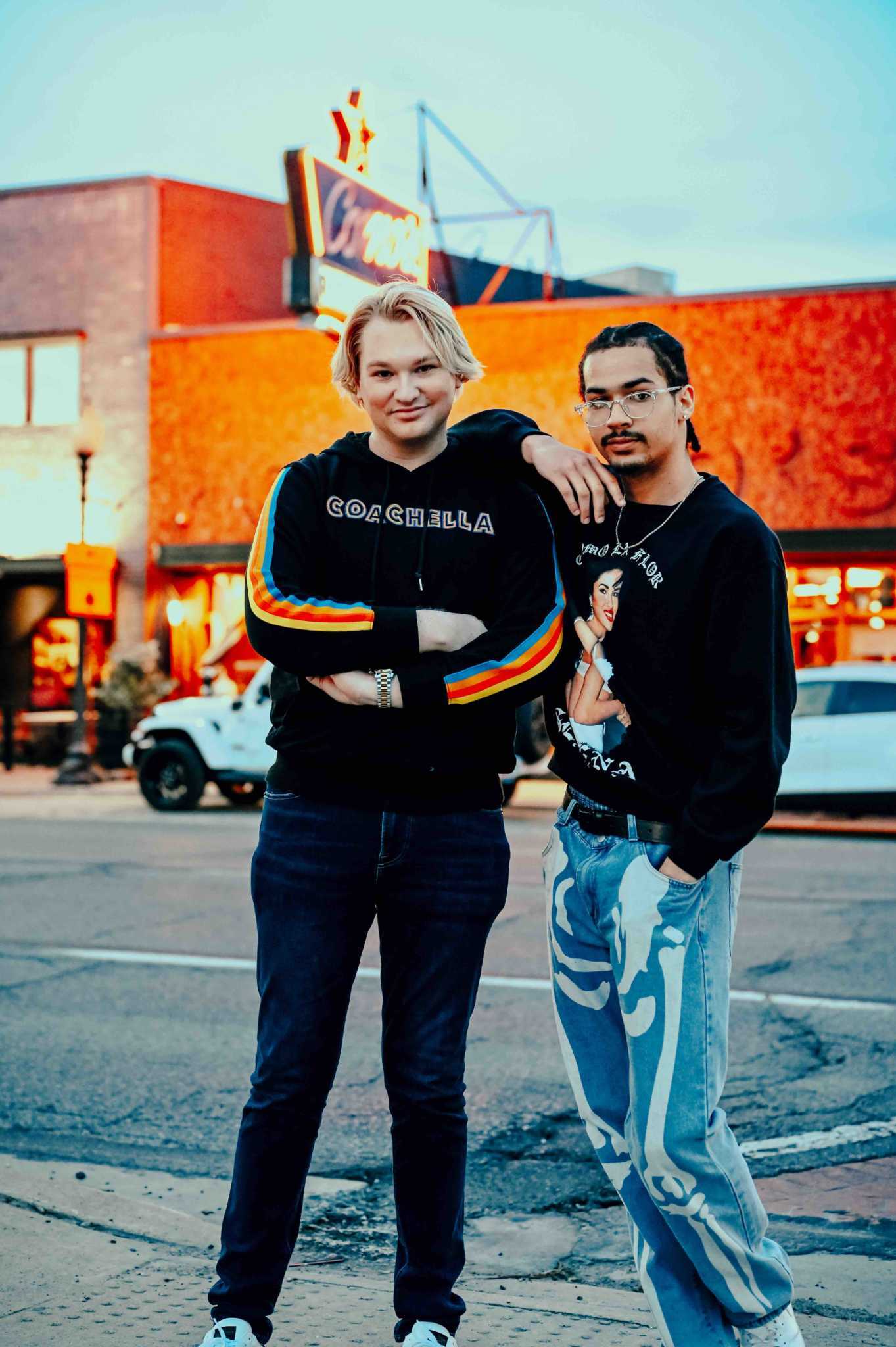
For Reyes, the divides aren’t only geographic or cultural — they’re also often economic.
“Black and brown people need housing, we need jobs, we need food. We need transportation and shelter. And very few Oakland County LGBT agencies focus on it,” says Reyes, who points to the late-’80s decision to quarter Affirmations in Ferndale as key in cementing an urban-suburban divide within the community — one exacerbated, too, by the city’s rising real estate costs. “I think Ferndale as a whole is a good space. But it is always going to be very white.”
Even so, Reyes applauds the efforts of Ferndale’s city officials in working to build a more inclusive environment, as well as the efforts of queer community leaders like Music who advocate to make the city and community more inclusive — and who Reyes considers a close friend.
For Maniere, who points to research on Ferndale’s passage of a Human Rights Ordinance in 2006 — the culmination of an anti-discrimination campaign that began there in 1991 — the dialogue found surrounding it has proven illuminating.
“There is a lot of language that comes up around not just [protecting] LGBT people, but: ‘We are an open-minded community.’ ‘We value diversity, we love diversity,’ often not specifying exactly what that means. And I think that kind of speaks to a larger pattern, in which queer diversity masks other forms of exclusion.”
For Maniere, thinking about Ferndale’s queer community requires looking critically at the ways it approaches inclusion while keeping in mind the context of what surrounds it. For all the ways Ferndale follows certain historical patterns — of urban-suburban divisions, of racialized migration, and of gentrifying and heavily white queer spaces — it’s been an exception in many others that make it unique, both within Detroit and more broadly.
“It’s this blue-collar place in the middle of a very important metropolitan area that is staking its ground on being, beyond even queerness, a progressive hub. The degree to which it accomplishes that is a different question,” she notes. But it’s a place that stakes its claim to being tolerant, to being diverse, to parading those things as positive values, when that’s not the norm surrounding it.”
For Music, who’s sometimes felt out of place elsewhere, the sensation of being queer in Ferndale can seem both palpable and distinct, and hard to find elsewhere. Its successes, while marred by certain histories and necessitating ongoing work, still offer something to celebrate.
“Every once in a while, I’ll stand back and see something and I’m like: ‘Oh, this is different.’ But a lot of times I’m in it: I’m writing a speech, I’m up on stage. And it’s not like I can take it all in,” says Music, recalling several moments of queer people and allies coming together in a show of support. “After the Pulse nightclub shooting, seeing how many people showed up to the candlelight vigil was very, very inspiring. There [was] just this sense that we know the community is hurting, and we want to make sure that people are going to be OK.”
“We have people who bring their kids to Pride Festival,” she adds, “not because they as parents are gay, but because they want their kids to know: ‘There’s not going to be a closet in our house.’”


